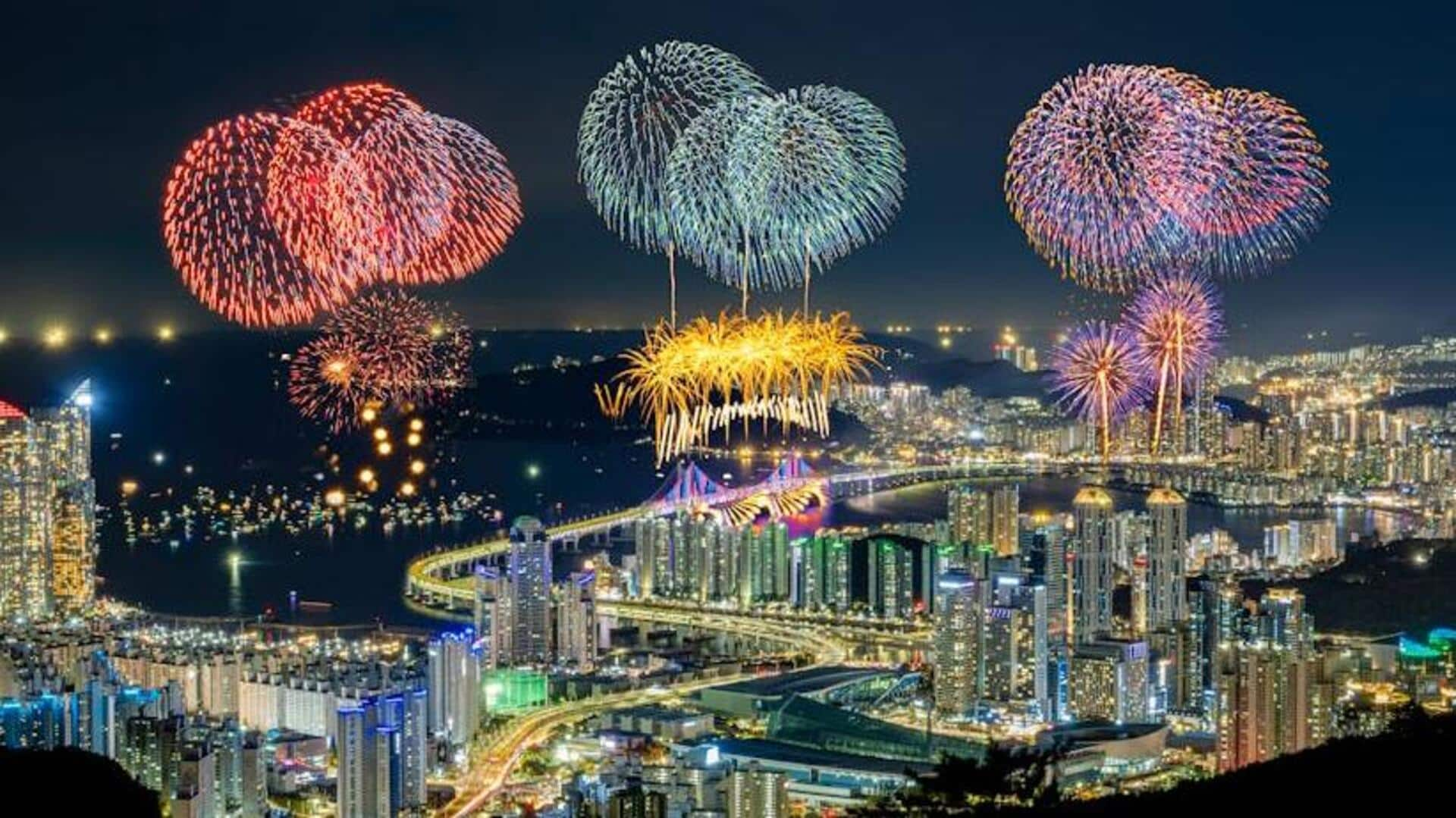
Here's why Korean festivals are super enjoyable!
What's the story
Korean festivals are a beautiful blend of culture, history, and community spirit.
These celebrations give a sneak peek into the rich traditions that have been handed down through the generations.
From colorful parades to intricate rituals, each festival is a unique representation of Korean heritage.
Here are five such distinct traditions that make these festivals truly special.
Here's taking a look at the customs and practices that define them.
Traditional dress
Hanbok: Traditional Korean attire
Another traditional attire worn during Korean festivals is the hanbok.
Defined by its bright colors and simple lines, it embodies Korea's cultural identity.
The hanbok comprises a jeogori (jacket) and chima (skirt) for women, or baji (pants) for men.
Wearing hanbok during festivals signifies respect towards tradition and elevates the celebrations with an air of elegance.
Musical tradition
Samulnori: Percussion music performance
Samulnori, a traditional form of percussion music, is performed at most Korean festivals.
It consists of four instruments - janggu (hourglass drum), buk (barrel drum), jing (gong), and kkwaenggwari (small gong).
The energy of the performance is infectious and pulls the crowd into the rhythm and excitement of the festival.
Harvest celebration
Chuseok: Harvest festival rituals
Chuseok is one of Korea's biggest harvest festivals.
The festival is celebrated with several rituals to honor ancestors.
Families come together to perform ancestral rites called charye, where they prepare food offerings as a sign of respect.
Further, people also visit their ancestral graves to clean them and pay their respects in person.
Dance ritual
Ganggangsullae: Circle dance tradition
Ganggangsullae is an ancient circle dance performed by women during certain Korean festivals like Chuseok or Daeboreum.
Participants hold hands in a circle under the moonlight while singing traditional songs together.
Not only does this dance promote community bonding, but it also preserves cultural heritage with its rhythmic movements.
Cultural performance
Danoje Festival: Mask dance drama
The Danoje Festival, which has been held annually in South Korea's east coast city of Gangneung since 1967, is famous for its mask dance dramas called talchum.
The festival was highlighted by UNESCO as Intangible Cultural Heritage for its historical significance.
Local communities carry on these performances today, with storytelling laced with humor, satire, and social commentary.
This makes the festival entertaining as well as educational for attendees.